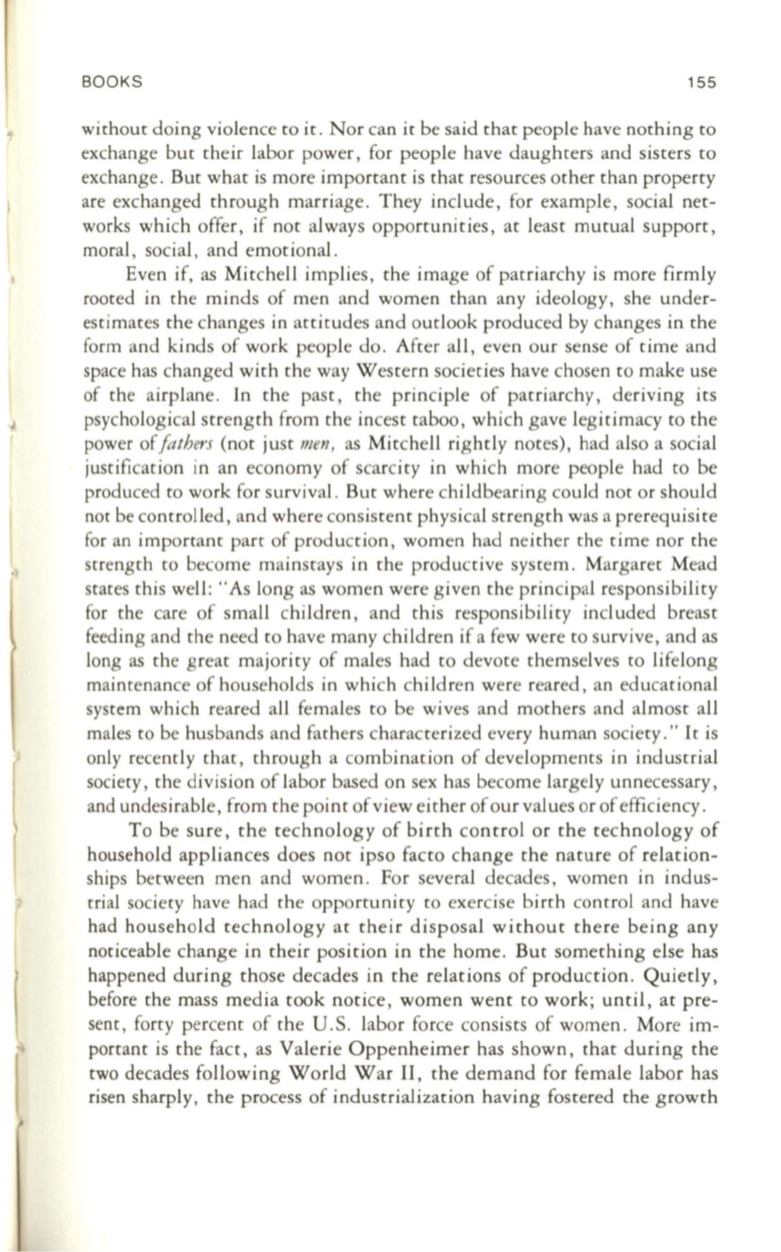
l
BOOKS
155
without doing violence to it . Nor can it be said that people have nothing
to
exchange but their labor power , for people have daughters and sisters
to
exchange . But what is more important is that resources other than property
are exchanged through marriage. They include, for example, social net–
works which offer , if not always opportunities, at least mutual support,
moral , social, and emotional.
Even if, as Mitchell implies , the image of patriarchy is more firmly
rooted in the minds of men and women than any ideology, she under–
estimates the changes in attitudes and outlook produced by changes in the
form and kinds of work people do . After all, even our sense of time and
space has changed with the way Western societies have chosen ro make use
of the airplane. In the past, the principle of patriarchy, deriving its
psychological strength from the incest taboo , which gave legitimacy to the
power of
fathers
(not just
men,
as Mitchell rightly notes), had also a social
justification in an economy of scarcity in which more people had
to
be
produced
to
work for survival . But where childbearing could not or should
not be controlled, and where consistent physical strength was a prerequisite
for an important part of production , women had neither the time nor the
strength
to
become mainstays in the productive system . Margaret Mead
states this well : "As long as women were given the principal responsibility
for the care of small children, and this responsibility included breast
feeding and the need
to
have many children if a few were
to
survive , and as
long as the great majority of males had
to
devote themselves
to
lifelong
maintenance of households in which children were reared, an educational
system which reared all females
to
be wives and mothers and almost all
males to be husbands and fathers characterized every human society. " It is
only recently that, through a combination of developments in industrial
society, the division of labor based on sex has become largely unnecessary,
and undesirable, from the point of view either ofour values or ofefficiency.
To be sure, the technology of birth control or the technology of
household appliances does not ipso facto change the nature of relation–
ships between men and women . For several decades, women in indus–
trial society have had the opportunity to exercise birth control and have
had household technology at their disposal without there being any
noticeable change in their position in the home. But something else has
happened during those decades in the relations of production . Quietly,
before the mass media took notice, women went
to
work; until, at pre–
sent , forty percent of the U .S. labor force consists of women . More im–
portant is the fact, as Valerie Oppenheimer has shown, that during the
two decades following World War
II,
the demand for female labor has
risen sharply, the process of industrialization having fostered the growth


